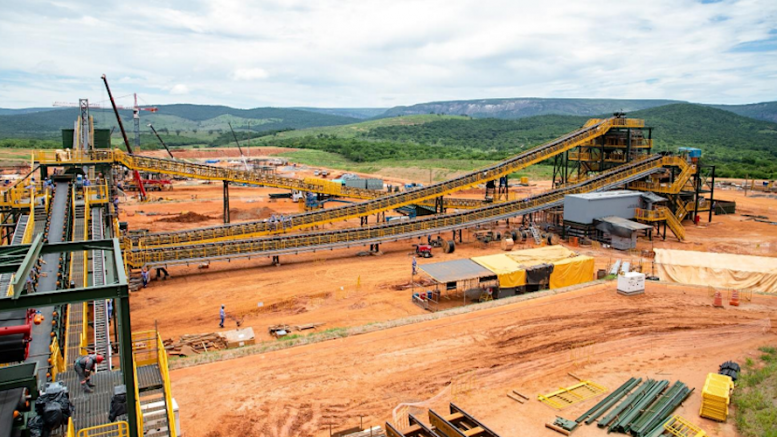The numbers are in for mine financings in 2022, and they are disappointing, if not surprising.
According to just-released figures from the Prospectors and Developers Association of Canada, global financing for mining last year, combining debt and equity, declined to a dismal US$41.8 billion from US$65 billion the previous year. That’s a 50% drop in equity financing (from US$34 billion to US$17 billion) and a nearly 20% drop in debt (from US$31 billion to US$25 billion). And it’s also the lowest overall amount in the last 11 years.
This despite growing awareness of a looming critical mineral crunch as nations and companies embark on a path of metals-intensive decarbonization, all while seeking to localize supply chains and source raw materials from friendly nations.
Before last year’s geopolitical and economic shocks (Russia’s invasion of Ukraine, high inflation, etc.), things had been starting to look up.
Dean McPherson, head of business development with TMX Group, which runs the TSX and TSX Venture Exchanges, notes that investors began to recognize the importance of battery metals in 2021, which he says was “an exciting year.” (The investor interest in the battery space is reflected in this year’s TSX Venture 50, which names the top performers based on market cap across five sectors. The mining companies on the list are dominated by copper and lithium, with only one gold-focused issuer compared with the 2021 list, which included at least three precious metals-focused companies.)
But the battery metals momentum that had been building up fell off in 2022 starting with Russia’s invasion of Ukraine.
“Really it has to do with the broader economy,” says McPherson, who adds it’s not just the mining sector that has seen IPOs ground to a halt.
“Right now, it seems that the forecasts are saying this hesitation in the equity capital market is going to continue at least for the first quarter and potentially into the second quarter. So I think we’re all sort of prepared for a pretty bumpy first half of this year,” he said.
“The fundamentals are all there, there is a significant demand coming and certainly we’re concerned about supply as far as the metals that are required to meet all these global objectives, so yes, we should be seeing a robust market right now.”
McPherson notes that the mining sector has been “challenged” for a number of years and the 2021 uptick followed historic lows in investment.
The longer the financing lull, the bigger the supply crunch. End users are finally coming to realize that they too will lose out if this underinvestment continues.
Battery makers and automakers, eager to lock down raw materials needed for production before their competition does, have started to invest in not just offtakes from producing mines, but are now committing financing to development projects.
This year alone we’ve seen automakers step up with GM’s US$650-million investment in Lithium Americas for development of its Thacker Pass project in Nevada; a $207-million investment by Stellantis in McEwen Copper toward development of its Los Azules project in Argentina; and rumours of a potential investment by Tesla in Sigma Lithium, which is nearing production at its Grota do Cirilo mine in Brazil.
It’s in this context that Bloomberg reported these carmakers as well as Ford, Rivian, Mercedes-Benz and more attended BMO Capital Markets’ Global Metals, Mining & Critical Minerals conference in Florida in late February — indicating we’ll see even more of these deals this year, perhaps reaching even further upstream.
Australia’s head start
The PDAC figures also show that Australia, which for several years now has outstripped Canada in terms of funds raised for mining, continues to lead on this metric. In 2022, Canada saw US$4.9 billion raised in equity financing for mining versus US$5.8 billion in Australia. However, PDAC notes that Canada saw more spending during the period, as we were able to retain more of the funds raised due to generous incentive regimes.
McPherson isn’t worried that Canada, traditionally the biggest source of funding for mining globally, is losing its top spot. While capital raised is one measure of comparison, there are still nearly twice the number of companies listed in Toronto versus Australia.
Instead, McPherson believes the funding numbers are tied to Australia’s earlier start on forming a critical minerals strategy.
“Canada’s competitiveness in the mining sector is not diminishing, not at all. What you’re seeing is a reflection again of the battery metals space and the centre stage taken by the mining sector,” he said. “Australia had an early jump into this and it really started with the Australian government creating their national critical minerals strategy.”
Australia’s first Critical Minerals Strategy was launched in 2019 and since then it’s continued to build on the plan, including the introduction of its A$2-billion Critical Minerals Facility in 2021.
That support, which has included providing debt to companies in the critical mineral space in Australia to help them get to production faster, has paid off.
Now that the U.S. and Canadian governments have followed suit with their own strategies, supportive policies and funding (including the federal government’s $3.8-billion Critical Minerals Strategy and the Biden administration’s Inflation Reduction Act, both released last year), Dean expects the TSX and TSX Venture to once again take the lead in terms of the amount of capital raised.
McPherson says there’s already quite a bit of optimism that the mining sector will be ready for takeoff once external factors (i.e. the threat of recession) lift.
“The latter part of January leading into February certainly felt like the market was warming again in terms of financing activity and several IPOs that we had seen put on pause at the end of last year because of the broad economy and investor sentiment have picked up speed,” he said, pointing to Lithium Royalty Corp.’s recent filing of a prospectus for an IPO as one example. “I suspect you might see more of those coming soon. The wheels are turning again and I think there’s general optimism in the marketplace.”




Be the first to comment on "After a dismal 2022, financing ‘wheels are turning again’"